In today’s electronic music landscape, finding a sound that is both authentic to the underground and accessible to the mainstream is a delicate science. While most labels settle for a single genre, one New Jersey-based label, by the name of Mugic.us, is charting a precise course through the complex ecosystem of low-end frequencies.
Dedicated to what they call the “Goldilocks Zone” of bass, this label aims to blend the rhythmic core of dubstep and drum & bass with the forward-thinking soundscapes of halftime and trap/wave.
Recently, we dove deep with the label’s founder, Jonas Loeb, to discuss their unconventional A&R philosophy, the art of building a unified community across four distinct genres, and how they ensure every single track hits that perfect sweet spot
River Beats: How do you define the label’s mission of finding bass music’s “Goldilocks Zone,” and what specific sonic qualities make a track “just right” for your catalog?
Jonas Loeb: Good question. I’ve worried it’s become somewhat of an “I know it when I’ll see it.” But it’s bass music that feels “just right,” with the punch and low-end drive to move a crowd, but the depth to make listeners stop and think — like a dynamic meditation. I’ve also called it the “finesse pocket.”
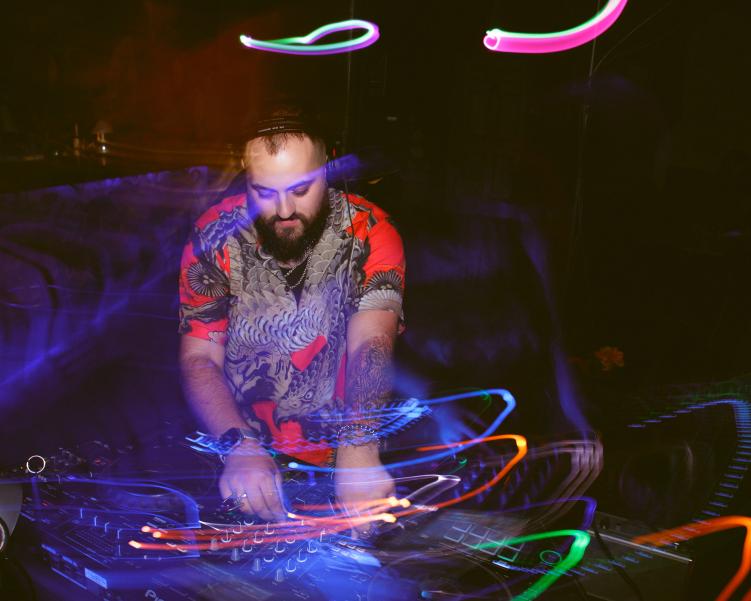
JL: Basically, as someone who was a producer for over a decade before I started performing, I’m looking for intention, polished sound design, and narrative flow. It’s not about being weird or different, nor about a specific genre; it’s about carving out a place for that magical sweet spot of dance music with a spark of intellect.
RB: You bridge dubstep, DNB, halftime, and trap/wave. Which two of those genres are the most difficult to blend successfully, and how do you coach artists through that confluence of styles?
JL: It’s important to remember that each of these categories has an enormous range. It’s not that any of these genres are harder to blend than the other. In my view, the more different the energy, the more difficult the blend. Blending the styles comes down to careful curation. We’re less focused on genre or tempo because they are arbitrary lines. Instead, we focus on a feeling, where I often am thinking about pacing, frequency balance, loudness, and how to keep the flows and atmospheres in dialogue instead of conflict.
JL: Coaching artists through that confluence of styles comes down to trust. It feels like there’s fewer and fewer major players who operate on a multi-genre basis, and some newer artists may not even have a mental model of how something like this can work. It’s no secret that today’s algorithms serve us more of the same and reward genre consistency. But as an artist and a label head, I want my music project and my label to be a shining example of what underground music can mean in 2025 — going against the grain put on us by external forces in pursuit of compelling art and that dynamic meditative feeling. In simply existing, I hope we can build trust through that in the years to come.
RB: What is the common thread—beyond genre—that runs through your artists? Is it a focus on sound design, emotional depth, or rhythmic complexity?
JL: The artists on the launch compilation share curiosity. Each uses bass music as a language for emotional truth rather than formula. They prioritize storytelling through tone and texture—whether that’s a melancholy pad, a rhythmic glitch, or an explosive drop. The common thread is a sense of restraint and thoughtfulness. I haven’t said this publicly before, but for a second, the compilation was feeling a bit like the island of misfit toys — where artists were sending deeply meaningful pieces that didn’t fit the mold for other labels. The Goldilocks zone lives there, too.
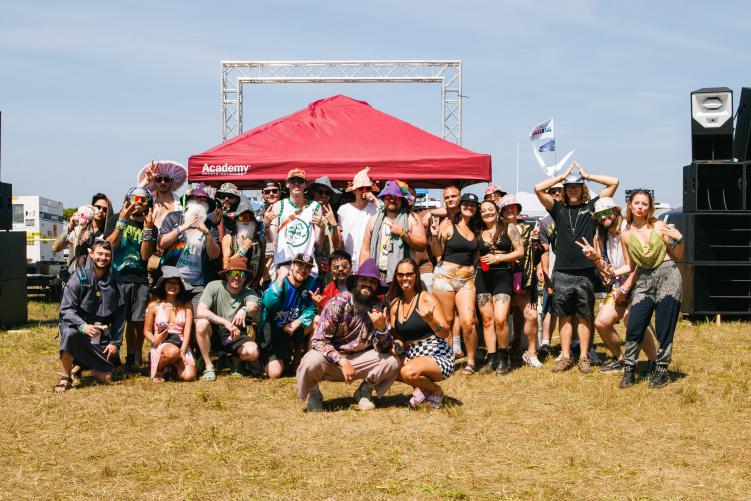
JL: And let’s be real – with no established music out, it’s hard to solicit music from people with releases and features on Wakaan, Dim Mak, Circus, UKF, and more. The trust these artists had in me with their beloved tracks was tremendous, and it takes a certain curiosity and humility to sign with a fresh label when you’re at that level.
RB: How do you honor the fundamental roots of classic dubstep and drum & bass while pushing for the genuinely innovative and futuristic sounds of halftime and wave?
JL: First, through the sound. I think the Goldilocks Zone, as a concept, is subconsciously grounded in a sound that blends the new and the old. Older electronic music tends to have a less harsh shape, but contemporary tools and technology have pushed the bounds of what’s possible. I’ve found that music that balances these tends also to be the music that focuses on feeling. Second, through the people. Drum & bass and dubstep both grew from underrepresented, working-class, and predominantly Black and immigrant communities in the UK. We can honor that legacy by carrying that tradition, featuring as many underrepresented folks as possible — not because I want to play identity politics, but because EVERYONE who is the best at what they do and has an important contribution to make deserves a shot.
RB: When signing a new artist, what specific non-musical resources (marketing, branding, mentorship) do you offer that are tailored to helping them navigate four distinct scenes?
JL: One of my top priorities is to be as communicative as possible with the artists, which provides a key opportunity for brainstorming and guidance on strategy. I try to ask questions about what artists need and do what I can to fill that hole.
JL: For newer artists, in terms of branding – for example, Brooklyn-based ‘Kavra’ submitted his track “Right Left,” and I loved it. He’d never had a label release before, so we worked out a plan to help him secure his Spotify and Apple Music profiles. I also advised him to go for all caps KAVRA, because there was no profile there. I try to create and provide as many graphics (including album artworks) as I can or work with any of the existing visuals or marketing materials that artists come to me with. I reject the idea that the genre scenes are so distinct. If anything, the goal of the label is to bring them together through a shared palette of vibes and sound. Often, it comes down to basic advice that works across the board, but much of it remains on the artist to actually implement.
RB: Given your focus on technical genres, what details do you prioritize in the final master and distribution that ensure your music stands out on both a club system and a listener’s headphones?
JL: If I wasn’t a producer and didn’t master tracks for others for years, I’d be in no position to answer this question. Mastering, the final layer before a track is complete, is really about helping the specific song sound the very best it can. I consider frequency balance (ie is the sub the right volume, are the highs too harsh), and punch/dynamics, but don’t impose hard standards. Also, few are going to know what this means but dithering is often the secret sauce. Shout out to Deadmau5 for that one. For this compilation, I actually mastered three of the 12 tracks, as I thought going with a consistent frequency and loudness standard would create a more cohesive body of work for the album. I’ll let you guess which ones.
RB: How do you manage the risk of having a diverse genre catalog? How do you market a release to a strict drum & bass head without alienating a loyal trap/wave fan?
JL: I don’t view the multi-genre catalog as a risk. I view it as an opportunity to build a community of the open-minded to sounds that don’t fit neatly into any box. The catalog of music that comes on this label isn’t going to be for the vast majority of people. That’s not a risk, it’s a guarantee. I hate to say it, if you are a strict head of any genre, this label isn’t going to be for you. Music is subjective and there are too many feelings and moments in our lives to limit ourselves to one arbitrary category of music. We’re setting that expectation now – so it’s not a surprise when we do something unique.
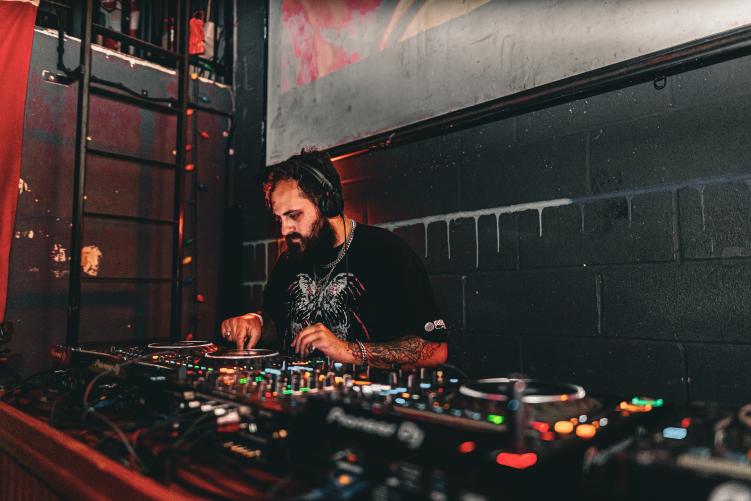
RB: Many producers feel the broader bass music market is saturated. What does the label do to ensure it’s uncovering new territory rather than contributing to the echo chamber?
JL: People are craving something different – and we’re doing it, evidenced by our beatport #1 in 140/deep dub and #2 in dubstep overall, #15 drum & bass overall, #4 in breaks (as of 10/22), and #66 overall. Uncovering new territory requires us to include new faces, and our demos will always be open (artists can submit via mugic.us/demos). We’re also working to curate dream collaborations between other artists, as well as sets and even events that are one-time moments.
RB: How important is the live show (sound systems, visuals, touring) to the label’s identity, and how does the label actively encourage its artists to translate your specific “Goldilocks” sound to a powerful stage performance?
JL: Priority one was to establish the sound. However, this launch went so well that we’re seeing some opportunities to bring the Mugic sounds into the physical world. We have no plans to compete with established promoters, but rather make them collaborators. In the next year, we’re looking forward to partnering with some established promoters and festivals to expand operations into the real world. Some of this may look like unique performances by Mugic.us alumni artists, but we aren’t taking anything off the table.
RB: What sub-genre or emerging sonic trend do you believe will define the next phase of bass music?
JL: I don’t pay attention to trends. I’m hoping it’s humanized storytelling and emotionally intelligent production, and I hope Mugic.us plays a part in that.
Follow Mugic.us:
Website | Instagram | SoundCloud
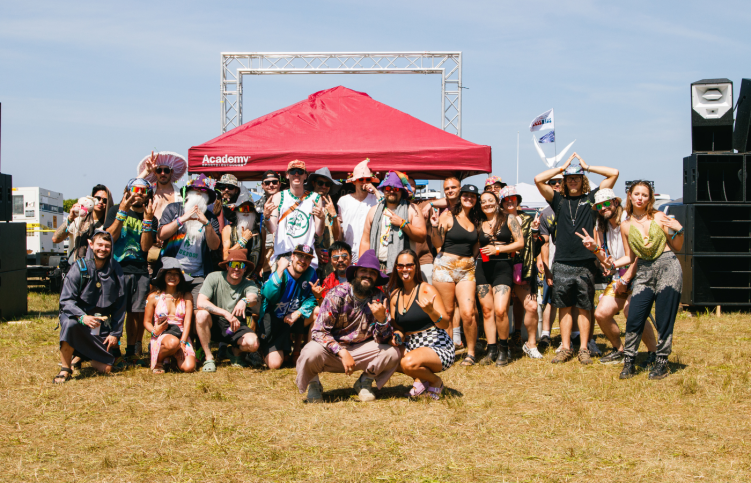
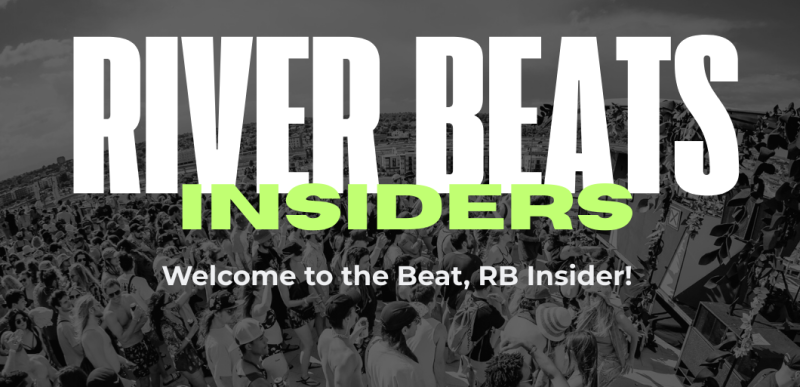
In today’s electronic music landscape, finding a sound that is both authentic to the underground and accessible to the mainstream is a delicate science. While most labels settle for a single genre, one New Jersey-based label, by the name of Mugic.us, is charting a precise course through the complex ecosystem of low-end frequencies.
Dedicated to what they call the “Goldilocks Zone” of bass, this label aims to blend the rhythmic core of dubstep and drum & bass with the forward-thinking soundscapes of halftime and trap/wave.
Recently, we dove deep with the label’s founder, Jonas Loeb, to discuss their unconventional A&R philosophy, the art of building a unified community across four distinct genres, and how they ensure every single track hits that perfect sweet spot
River Beats: How do you define the label’s mission of finding bass music’s “Goldilocks Zone,” and what specific sonic qualities make a track “just right” for your catalog?
Jonas Loeb: Good question. I’ve worried it’s become somewhat of an “I know it when I’ll see it.” But it’s bass music that feels “just right,” with the punch and low-end drive to move a crowd, but the depth to make listeners stop and think — like a dynamic meditation. I’ve also called it the “finesse pocket.”
JL: Basically, as someone who was a producer for over a decade before I started performing, I’m looking for intention, polished sound design, and narrative flow. It’s not about being weird or different, nor about a specific genre; it’s about carving out a place for that magical sweet spot of dance music with a spark of intellect.
RB: You bridge dubstep, DNB, halftime, and trap/wave. Which two of those genres are the most difficult to blend successfully, and how do you coach artists through that confluence of styles?
JL: It’s important to remember that each of these categories has an enormous range. It’s not that any of these genres are harder to blend than the other. In my view, the more different the energy, the more difficult the blend. Blending the styles comes down to careful curation. We’re less focused on genre or tempo because they are arbitrary lines. Instead, we focus on a feeling, where I often am thinking about pacing, frequency balance, loudness, and how to keep the flows and atmospheres in dialogue instead of conflict.
JL: Coaching artists through that confluence of styles comes down to trust. It feels like there’s fewer and fewer major players who operate on a multi-genre basis, and some newer artists may not even have a mental model of how something like this can work. It’s no secret that today’s algorithms serve us more of the same and reward genre consistency. But as an artist and a label head, I want my music project and my label to be a shining example of what underground music can mean in 2025 — going against the grain put on us by external forces in pursuit of compelling art and that dynamic meditative feeling. In simply existing, I hope we can build trust through that in the years to come.
RB: What is the common thread—beyond genre—that runs through your artists? Is it a focus on sound design, emotional depth, or rhythmic complexity?
JL: The artists on the launch compilation share curiosity. Each uses bass music as a language for emotional truth rather than formula. They prioritize storytelling through tone and texture—whether that’s a melancholy pad, a rhythmic glitch, or an explosive drop. The common thread is a sense of restraint and thoughtfulness. I haven’t said this publicly before, but for a second, the compilation was feeling a bit like the island of misfit toys — where artists were sending deeply meaningful pieces that didn’t fit the mold for other labels. The Goldilocks zone lives there, too.
JL: And let’s be real – with no established music out, it’s hard to solicit music from people with releases and features on Wakaan, Dim Mak, Circus, UKF, and more. The trust these artists had in me with their beloved tracks was tremendous, and it takes a certain curiosity and humility to sign with a fresh label when you’re at that level.
RB: How do you honor the fundamental roots of classic dubstep and drum & bass while pushing for the genuinely innovative and futuristic sounds of halftime and wave?
JL: First, through the sound. I think the Goldilocks Zone, as a concept, is subconsciously grounded in a sound that blends the new and the old. Older electronic music tends to have a less harsh shape, but contemporary tools and technology have pushed the bounds of what’s possible. I’ve found that music that balances these tends also to be the music that focuses on feeling. Second, through the people. Drum & bass and dubstep both grew from underrepresented, working-class, and predominantly Black and immigrant communities in the UK. We can honor that legacy by carrying that tradition, featuring as many underrepresented folks as possible — not because I want to play identity politics, but because EVERYONE who is the best at what they do and has an important contribution to make deserves a shot.
RB: When signing a new artist, what specific non-musical resources (marketing, branding, mentorship) do you offer that are tailored to helping them navigate four distinct scenes?
JL: One of my top priorities is to be as communicative as possible with the artists, which provides a key opportunity for brainstorming and guidance on strategy. I try to ask questions about what artists need and do what I can to fill that hole.
JL: For newer artists, in terms of branding – for example, Brooklyn-based ‘Kavra’ submitted his track “Right Left,” and I loved it. He’d never had a label release before, so we worked out a plan to help him secure his Spotify and Apple Music profiles. I also advised him to go for all caps KAVRA, because there was no profile there. I try to create and provide as many graphics (including album artworks) as I can or work with any of the existing visuals or marketing materials that artists come to me with. I reject the idea that the genre scenes are so distinct. If anything, the goal of the label is to bring them together through a shared palette of vibes and sound. Often, it comes down to basic advice that works across the board, but much of it remains on the artist to actually implement.
RB: Given your focus on technical genres, what details do you prioritize in the final master and distribution that ensure your music stands out on both a club system and a listener’s headphones?
JL: If I wasn’t a producer and didn’t master tracks for others for years, I’d be in no position to answer this question. Mastering, the final layer before a track is complete, is really about helping the specific song sound the very best it can. I consider frequency balance (ie is the sub the right volume, are the highs too harsh), and punch/dynamics, but don’t impose hard standards. Also, few are going to know what this means but dithering is often the secret sauce. Shout out to Deadmau5 for that one. For this compilation, I actually mastered three of the 12 tracks, as I thought going with a consistent frequency and loudness standard would create a more cohesive body of work for the album. I’ll let you guess which ones.
RB: How do you manage the risk of having a diverse genre catalog? How do you market a release to a strict drum & bass head without alienating a loyal trap/wave fan?
JL: I don’t view the multi-genre catalog as a risk. I view it as an opportunity to build a community of the open-minded to sounds that don’t fit neatly into any box. The catalog of music that comes on this label isn’t going to be for the vast majority of people. That’s not a risk, it’s a guarantee. I hate to say it, if you are a strict head of any genre, this label isn’t going to be for you. Music is subjective and there are too many feelings and moments in our lives to limit ourselves to one arbitrary category of music. We’re setting that expectation now – so it’s not a surprise when we do something unique.
RB: Many producers feel the broader bass music market is saturated. What does the label do to ensure it’s uncovering new territory rather than contributing to the echo chamber?
JL: People are craving something different – and we’re doing it, evidenced by our beatport #1 in 140/deep dub and #2 in dubstep overall, #15 drum & bass overall, #4 in breaks (as of 10/22), and #66 overall. Uncovering new territory requires us to include new faces, and our demos will always be open (artists can submit via mugic.us/demos). We’re also working to curate dream collaborations between other artists, as well as sets and even events that are one-time moments.
RB: How important is the live show (sound systems, visuals, touring) to the label’s identity, and how does the label actively encourage its artists to translate your specific “Goldilocks” sound to a powerful stage performance?
JL: Priority one was to establish the sound. However, this launch went so well that we’re seeing some opportunities to bring the Mugic sounds into the physical world. We have no plans to compete with established promoters, but rather make them collaborators. In the next year, we’re looking forward to partnering with some established promoters and festivals to expand operations into the real world. Some of this may look like unique performances by Mugic.us alumni artists, but we aren’t taking anything off the table.
RB: What sub-genre or emerging sonic trend do you believe will define the next phase of bass music?
JL: I don’t pay attention to trends. I’m hoping it’s humanized storytelling and emotionally intelligent production, and I hope Mugic.us plays a part in that.
Follow Mugic.us:
Website | Instagram | SoundCloud
Related Content: